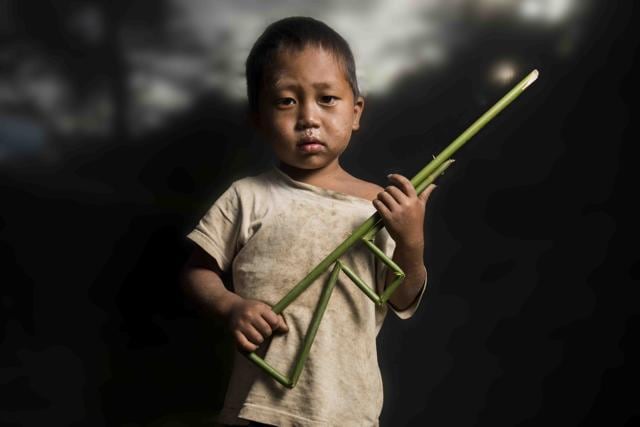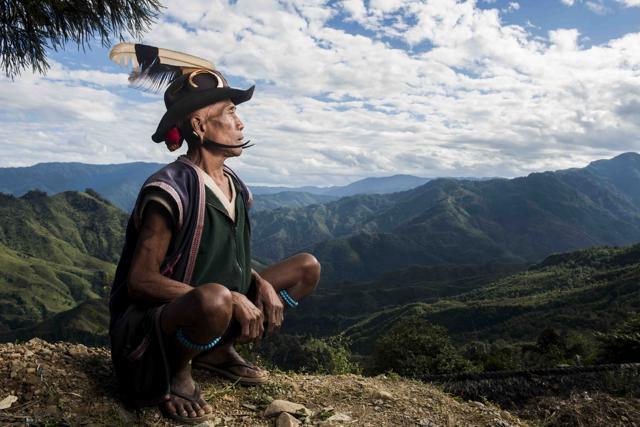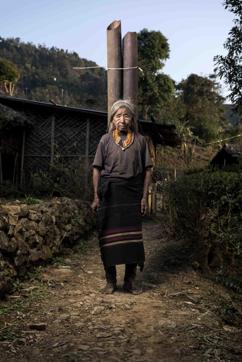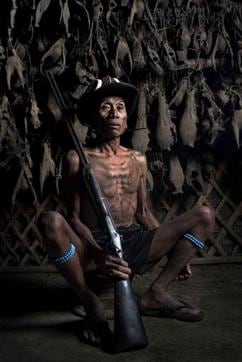Konyak of Nagaland: A photo series on the last headhunters
A startling series of photos offer an unusual glimpse into the lives of a Naga tribe, once famous for their fierce, deadly warriors.
The Konyak -- a dwindling tribe in Nagaland -- haven’t beheaded humans since the 1960s. But their deadly history still haunts the imagination of photographers: Fanil Pandya, 32, is the latest one to go in search of an extraordinary past that is long gone.
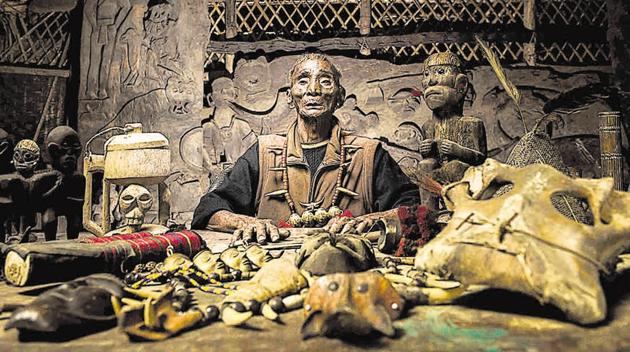
The result of his unusual quest is a series of startling photographs now on display in Delhi’s Egg Art studio. Together, they are an unforgettable glimpse inside a community that is fast disappearing
When he first encountered the tribe in December 2015, Pandya says, he was overwhelmed. He had travelled deep into the heart of Nagaland -- to the Longwa village in Mon district , close to India’s border with Myanmar --- hoping to document the last generation of headhunters. Gradually, he befriended several men in the tribe.
Although thatched roofs over wooden houses have given way to tin roofs and concrete structures, the tribe is struggling. To make ends meet, they have started selling produce-- vegetables, corn, rice -- in the local markets.
During his visit, Pandya, who hails from Baroda, realised that a lot of what we read about such communities is hyped. “Yes, what they used to do (headhunting) is not considered normal in the society we live in,” he says. “But this is their history. If you look from their point of view, many things that we do can look weird.”
Most of Pandya’s images are arresting individual portraits of ageing men, including the last headhunter himself. Facial tattoos and jewellery are classic adornments. Every human kill earned them a facial tattoo as an honorary symbol and many headhunters wear a brass skull necklace that denotes how many heads they have hunted. According to their beliefs, by taking the head of an enemy, they would gain some of his power and soul. Bones of buffaloes, deer, boars and hornbills are still found in Konyak homes.There was a time when skulls were displayed too.
But change has proved to be inescapable even in these remote villages still ruled by chieftains or “Angh “ as they are known in the local dialect.
“One of the last headhunters speaks fluent English and owns a mobile phone,” says Pandya.
What: Headhunters, a solo photo series by Fanil Pandya
Where: Egg Art Studio, Barakhamba
When: Until January 19, 11 am to 6.30 pm
Nearest metro station: Barakhamba Road
